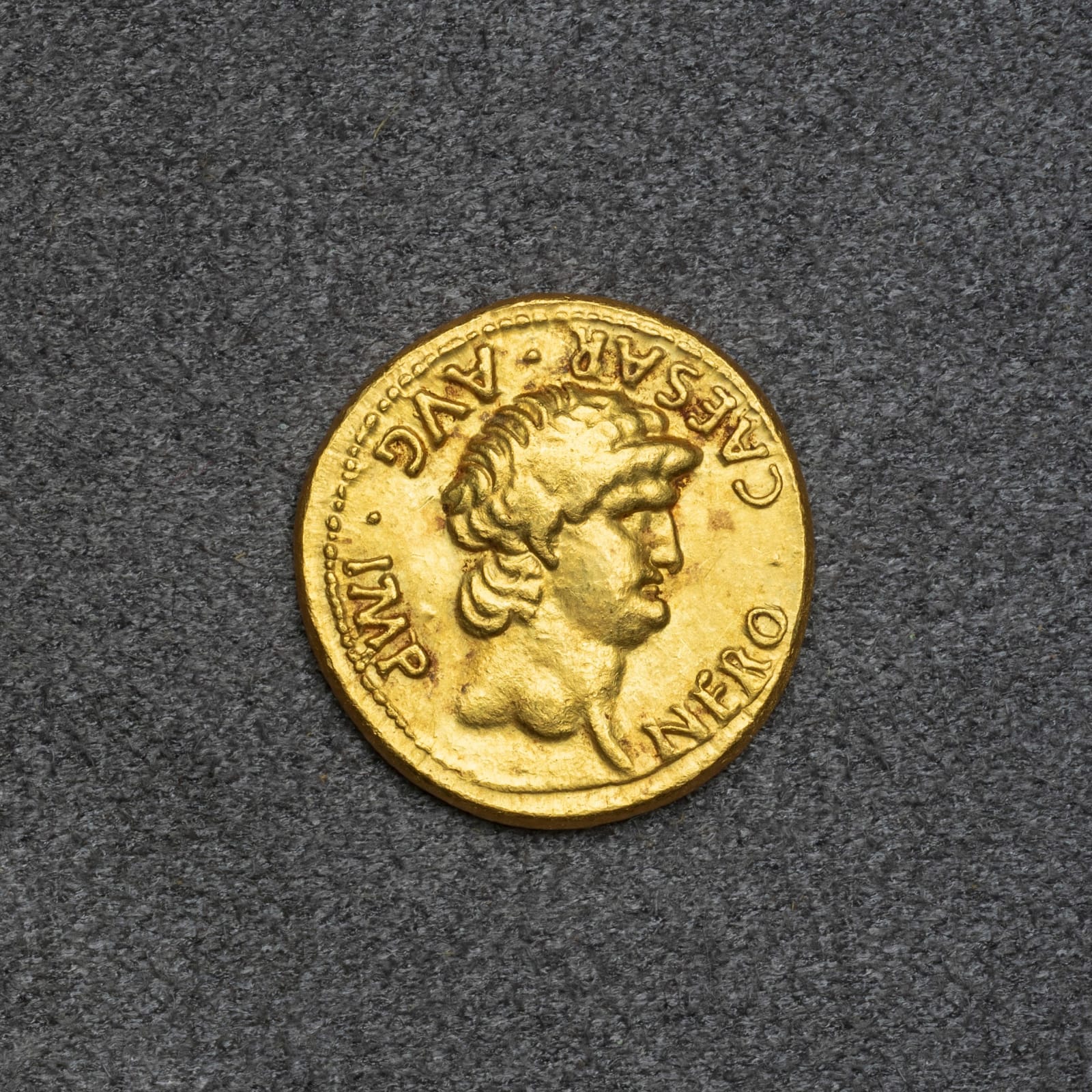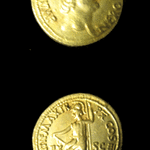Roman Gold Aureus of Emperor Nero, 54 CE - 68 CE
Gold
7.3 Grams
LC.135
Further images
Obverse | Lateral portrait of Emperor Nero, bare head to right Inscription | NERO CAESAR AVG IMP Reverse | Roma, the goddess symbolizing the Roman Empire or Virtus, the Roman...
Obverse | Lateral portrait of Emperor Nero, bare head to right
Inscription | NERO CAESAR AVG IMP
Reverse | Roma, the goddess symbolizing the Roman Empire or Virtus, the Roman deity of courage and virtue
Inscription | PONTIF MAX TR P X COS IIII P P EX S C
Nero was the fifth emperor of the Roman Empire and the last ruler of the Julio-Claudian dynasty, which originated with Augustus. Despite the complexities and nuances of Nero's reign, subsequent historical evaluations of his leadership have tended to focus on his apparent excesses and abuses of power. While Nero enjoyed popularity and admiration early in his reign, he prioritized artistic pursuits over political governance and engaged in behaviors deemed unacceptable by Roman society, including extravagant spending, the murder of his own family members, and the active suppression of Christianity. These actions contributed to his eventual discrediting and portrayal as a tyrant, with accusations even linking him to the Great Fire of Rome. After being condemned by the Senate, Nero finally chose to end his life by suicide rather than face the painful punishment of flogging. This gold coin was minted during the reign of Emperor Nero. The obverse of the coin depicts a side view of the Roman Emperor Nero with the inscription "NERO CAESAR AVGustus IMPerator". The reverse shows an armed Roma, the goddess symbolizing the Roman Empire or Virtus, the Roman deity of courage and virtue. The inscription on the coin reads, “PONTIFex MAXimus TRibunicia Potestas X(Decima) COnSul IIII(Quartus) Pater Patriae EX Senatus Consulto,” which translates as High Priest, Tribunician power for the tenth time, Consul for the fourth time, Father of the Country, in accordance with a Senate decree. This exquisite coin can be precisely dated between 62 and 63 CE, thanks to the inscription on the reverse, which refers to Nero's fourth consulship and his tenth investiture with the tribunician powers. Nero held the consulship five times, with his fourth term occurring between 60 and 68 CE. The tenth tribunician power covers the period between 62 and 63 CE, providing accurate dating for the coin.
Inscription | NERO CAESAR AVG IMP
Reverse | Roma, the goddess symbolizing the Roman Empire or Virtus, the Roman deity of courage and virtue
Inscription | PONTIF MAX TR P X COS IIII P P EX S C
Nero was the fifth emperor of the Roman Empire and the last ruler of the Julio-Claudian dynasty, which originated with Augustus. Despite the complexities and nuances of Nero's reign, subsequent historical evaluations of his leadership have tended to focus on his apparent excesses and abuses of power. While Nero enjoyed popularity and admiration early in his reign, he prioritized artistic pursuits over political governance and engaged in behaviors deemed unacceptable by Roman society, including extravagant spending, the murder of his own family members, and the active suppression of Christianity. These actions contributed to his eventual discrediting and portrayal as a tyrant, with accusations even linking him to the Great Fire of Rome. After being condemned by the Senate, Nero finally chose to end his life by suicide rather than face the painful punishment of flogging. This gold coin was minted during the reign of Emperor Nero. The obverse of the coin depicts a side view of the Roman Emperor Nero with the inscription "NERO CAESAR AVGustus IMPerator". The reverse shows an armed Roma, the goddess symbolizing the Roman Empire or Virtus, the Roman deity of courage and virtue. The inscription on the coin reads, “PONTIFex MAXimus TRibunicia Potestas X(Decima) COnSul IIII(Quartus) Pater Patriae EX Senatus Consulto,” which translates as High Priest, Tribunician power for the tenth time, Consul for the fourth time, Father of the Country, in accordance with a Senate decree. This exquisite coin can be precisely dated between 62 and 63 CE, thanks to the inscription on the reverse, which refers to Nero's fourth consulship and his tenth investiture with the tribunician powers. Nero held the consulship five times, with his fourth term occurring between 60 and 68 CE. The tenth tribunician power covers the period between 62 and 63 CE, providing accurate dating for the coin.





